(Art direction and design: Jean-Dominique Lavoix-Carli)
Darkening clouds (of drones)
- Trump Geopolitics (2) – The US vs China Geoeconomic War

- AI at War (4): The US-China Drone and Robot Race
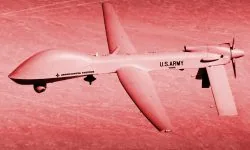
- How to use AI for Weak Signals – Trump, the International Revolutionary?

- 2d session of the Fifth Year of Advanced Training in Early Warning Systems & Indicators – ESFSI of Tunisia

- DeepSeek vs Stargate – China’s Offensive on U.S. AI Dominance?

On 28 August 2023, on the Island of Guam, Kathleen Hicks, Deputy Secretary of Defense, gave a speech at a military and media crowd about the need for the U.S. to mass produce drones in order to outsize the Chinese People’s Liberation Army (Deputy Secretary Kathleen Hicks Keynote Adress: “The Urgency to innovate”, US Department of Defense, 28 August, 2023).
The mission of this centre will be to protect NATO and NATO countries against cyberattacks, especially Russian and Chinese. It is worth noting that, during the NATO summit, the Belarus and Chinese militaries were carrying out joint maneuvers in Belarus, close to the Polish border (“China, Belarus start joint miliary drills near Polish border”, Reuters, July 9, 2024.
From 9 to 11 July 2024, the 75-years NATO Summit took place in Washington D.C. Among the various and momentous conclusions of this international, high level, political and military gathering, it was announced that the organization was creating a cyber-defense centre (Brandi Vincent, “NATO seeks to confront the growing pressure of “hybrid war””, DefenseScoop, 16 July 2024).
Military intelligentization
Meanwhile, the Chinese military is going through its own three-fronts modernization: modernization, informatization, intelligentization (David Kilcullen, The Dragon and the Snakes, How the Rest learned to fight the West, Hurst, 2020 and Kris Osborn, « China Adds AI to its Wing Loong Fleet of Attack Drones », Warrior Maven – Center for Military Modernization, 13 Décembre 2023). With regard to this last dimension, China is becoming a military drone leader.
Beijing produces them for its military and to create a “Great Wall of drones” (Bradley Bowman, major Jared Thompson and Ryan Brobst, “China’s surprising drones sales in the Middle east”, Defense News, 23 April 2024, Dan Arjin, “Saudi Arabia to purchase attack drones from China”, Israel Defense, 12/02/202 and The Takshashilla Institution and Anushka Saxean, « Drone Deployment and Data Defense », Eye on China, 2 octobre 2023).
Meanwhile, Chinese companies are selling drones all around the world, especially to U.S ambiguous allies or U.S. adversaries. Among these are Nigeria, General Haftar’s forces in Libya, Saudi Arabia, Serbia… (Guy Martin, “Italy intercepts Chinese UAVs being smuggled to Libya”, Defence Web, 4 July, 2024 and Jean-Michel Valantin, Jean-Michel Valantin, “China, Saudi Arabia and the Arab AI Rise”, The Red Team Analysis Society, January 31, 2023 and “China, Serbia, AI and the Pincer Movement on Europe”, The Red Team Analysis Society, April 2, 2023).
As it happens, the artificial intelligence (AI) field absorbs the whole drones-robotic field. So, the few U.S. and Chinese examples we have just mentioned are part of the AI militarization dynamic. They are features common to the two great powers.
Reciprocally, it appears that the mounting tensions between the U.S .and China are one of the drivers of the militarisation of AI / intelligentization of the military.
The question therefore arises as to whether the constant strengthening of this technological and strategic trend is leading the United States and China towards direct confrontation.
We also have to ask if and how the militarization of AI would, or will, influence the potentially coming confrontation.
Common ground : intelligentization of the military, preparing for war
In defense of a “good” Skynet
Since 2017, the Pentagon has militarized what Hélène Lavoix defines as “AI power” (“When Artificial Intelligence will Power Geopolitics – Presenting AI”, The Red Team Analysis Society, November 27, 2017). This dynamic follows two tracks. One track is the integration of AI capabilities to weapons systems, to the command and control systems as well as to the “observation / orientation / decision / action” loop (“OODA loop”).
The other track is the building of a mammoth AI infrastructure, called “Joint All-Domain Command and Control” (JADC2) (Sean Carberry, “Special report : Joint All Domain Command and Control”, a journey, not a destination”, National Defense, 07/10/2023). This giant network of AI networks encompasses and integrates the whole of the U.S. military. This means that the Pentagon and the U.S. Army, U.S. Air Force, U.S .Navy and U.S. Space force are part of a single and common architecture (Shelley K. Mesh, “Air Force to host JADC2 industry day with Army, Navy”, Inside Defense, December 21, 2023.
Massive increases of the military budget support this endeavour. For example, the budget of the Department of Defense was of USD 771 billion in 2023, and USD 842 billion in 2024. The Department of Defense (DoD) devotes most of this staggering increase to the integration of innovative technologies, chiefly AI, while facing the costs of supporting Ukraine against Russia. Meanwhile, the Ukraine war becomes a giant laboratory for experimenting military applications of AI (Michael Klare, “Spurring an endless arms race, the Pentagon girds for mid-century wars”, Tomdispatch, April 16, 2023).
The advent of Replicator
It is in this strategic and industrial contact that, on 28 August 2023, Kathleen Hick, assistant-secretary of defense, announced the launch of the “replicator” project. This project aims at offsetting the strategic advantage of the Chinese military “mass” (Deputy Secretary Kathleen Hicks Keynote Adress: “The Urgency to innovate”” US Department of Defense, 28 August, 2023).
To achieve this objective, the project of the assistant-secretary is to mobilize the U.S. production capabilities, in order to produce a “mass” of military drones that will be superior to the whole of the Chinese military. It is important to note that the assistant-secretary was talking on the Island of Guam, which is a major U.S. Navy base in the Pacific. So, the geography of the declaration of assistant-secretary of defense is anchored in a military infrastructure that would, or will be, on the front line of naval operations against China.
The Ukraine Experiment
Since May 2024 the Ukrainian start up Swarmer has developed autonomous combat swarms. As soon as they are produced, the Ukrainian military projects them on the battlefield. However, these new generation of AI piloted drones are also “only” the new batch of robots being sent in the Ukraine cauldron (Max Hunder, “Ukraine rushes to create AI-enabled war drones”, Reuters, 18 July, 2024 and Jean-Michel Valantin, “AI at War (1) – Ukraine”, The Red Team Analysis Society, April 3, 2024).
Given the importance of the U.S. military and of the GAFAM / “Google /Apple / Facebook /Amazon / Microsoft presence in Ukraine, one can safely hypothesize that the Ukrainian and U.S. military and industries widely share the feedback of this “new way of war” (Vera Bergengruen, “How Tech giants helped turn Ukraine into a giant AI war lab”, Time Magazine, February 8, 2024).
Finally, through different channels, the DoD develops a dense relationship with the Silicon Valley AI giants. As we have seen in AI-at War (1) – Ukraine, the U.S. military, notably through the national geo-spatial intelligence agency, already works with Oracle, Palantir and Amazon in order to implement Project Maven (Courtney Albon, “Geospatial-intelligence agency making strides on Project Maven AI”, C4ISR, May 22, 2023, Saleha Mohsin,“Inside project Maven, The US military’s AI Project”, Bloomberg, 29 February 2024).
The latter aims at using the imagery capabilities of the drone fleet in order to feed an electronic and interactive global military mapping of the earth. In the same time, Open AI works with the DoD in order to develop a military-only Chat GPT version. This project will help the military to sort through the gigantic and perpetually growing mass of data and information that the DoD collects through its global network of land, air, space and marine sensors (Jon Harper, “Microsoft deploys GPT-4 Large Language Model for Pentagon use in top-secret cloud”, DefenseScoop, 7 May 2024) .
The Rising Confrontation
An intelligentized People’s Liberation Army
In parallel as well as in confronting the US militarization of AI, the Chinese People’s Liberation Army is “intelligentizing” itself on a massive scale. As in the U.S., the different armed branches of the PLA integrate AI power. This process runs through the entire organization of the PLA (Nigel Inkster, The Great decoupling: China, America and the struggle for technological supremacy, Hurst, 2021). As the intelligentization of the Chinese OODA Loop is underway since 2018, other programs are implementing AI in order to pilot strategic weapons systems such as hyper sonic missiles (Jean-Michel Valantin, “Militarizing Artificial Intelligence – China (2)”, The Red Team Analysis Society, May 22, 2018 and Christopher Mc Fadden, « China uses cheap AI chip to control hypersonic weapons, boosting range », Interesting Engineering, 17 April, 2024).
Towards a Chinese Skynet ?
As it happens, the Chinese military is also developing its own AI architecture that should integrate the whole of its different services. This Multi-domain precision warfare (“MDPW”) could appear as a mirror construct of the US JADC2. However, there is a fundamental offensive component at the core of this Chinese intelligentization concept. As it happens, the MDPW aims at breaking the information flows that link the different U.S. armed branches through the JADC2 architecture (Kris Osborne, “China’s new multi domain precision warfare” operational concept”, RealClear Defense, 26 October, 2023).
Thus, instead of an AI integrated military supported by its own AI force multiplier, the U.S. military would degrade into a myriad of elements that would lose their integrity. Thus, the air, ground, space and maritime forces would once again be on their own. In the same dynamic, they would face an intelligentized, integrated and thus cohesive Chinese People’s Liberation Army (Hélène Lavoix, “Exploring cascading impacts with AI”, The Red Team Analysis Society, May 17, 2023 and “Portal to AI-Understanding AI and Foreseeing the AI powered world”, “Portal to Quantum Information Science and Technology- Towards a Quantum AI World ?” The Red Team Analysis Society).
Axis of training
Both the U.S. and Chinese AI militarization processes are nothing but a new and profound military revolution. Those new ways and means of battle and war management necessitate intense and constant training in order to achieve the proper integration of deployment and combat AI architectures. However, if the U.S. and Chinese military both share this goal, they have to face very different predicaments.
AI or Cultural (U.S.) Revolution ?
For the U.S. military, the main challenge is the implementation of the AI architecture by each of the armed branch. The AI capabilities of each service needs to be fully integrated to the overall DoD JADC2 architecture. Thus, each armed branch, and each element of them, would become an element of a common military. This may turn the mammoth U.S. military apparatus into a giant, fully coordinated modular weapons system (Michael Klare, “AI versus AI, and human extinction as collateral damage”, Tomdispatch, 11 July, 2023).
The sheer technical complexity of this endeavour is reinforced by the very history of the U.S. military. As it happens, its four components, the U.S. Army, the U.S. Navy, the U.S. Air Force and the U.S. space force (2019), have evolved in largely autonomous ways. Their coordination has always been a major problem for the national U.S. command and control (Alfred W. McCoy, In the Shadows of the American Century, The Rise and Decline of US Global Power, Haymarket Books, 2017).
Revolution is not enough
The Revolution in Military Affairs of the 1990s has been an important medium of inter-services jointness. It was the result of the common integration of space power and of information technologies. However, the four military branches are still largely autonomous kingdoms (Alfred W. McCoy, ibid).
Adding another layer of difficulties, the deployment of AI systems comes as a profound cultural shock. For example, in the U.S. Air Force, simulations of air combats opposing AI pilots and human pilots took place in 2021. After two dozen fictive fights, the AI had reached clear combat dominance ((Kenneth Payne, I, Warbot, the dawn of artificially intelligent conflict, London, Hurst, 2021 and Stephen Losey, « US Air Force stages dog-fights with AI-flown fighter jets », Defense News, 19 avril 2024).
Then, in 2023, training took place at “Top Gun” air school, opposing human pilots to AI piloted aircrafts. The fact that the U.S. Air Force did not disclose the results entails several hypotheses. One of those is that the AI pilots outperformed the human ones. The U.S. Air Force is deeply centred on the pilot community (Losey, ibid). So, those results may trigger a profound technological as well as social revolution.
These U.S. achievements are part of the wide arc of the U.S. military experience with AI and drones. As it happens, the U.S. military capital of war experience is ever growing. It is the consequence of its many involvements in numerous theatres of operations: among others, in Afghanistan, Irak, Syria, Jordan, Yemen, Colombia, the Sahel region… (Roberto J. Gonzalez, War Virtually, the Quest to Automate Conflict, Militarize Data, and Predict the Future, Oakland, University of California Press, 2022).
The PLA’s Race
On the Chinese side, the People’s Liberation Army must overcome its own double challenge. The first challenge is modernization through the triple dynamic of mechanization/ informatization/ intelligentization. This process started at the beginning of the 2010s and necessitates a massive political, scientific, technological, and industrial mobilization. In order to guarantee its sustainability, this modernization dynamic is anchored in the civil-military fusion policy (Nigel Inkster, ibid).
The Central Military Commission of the Chinese Communist Party implements this policy. The latter runs through the military-civil relationship established between the People’s Liberation Army (PLA) and civil research-development laboratories and industrial companies (Elsa B. Kania in “The PLA’s trajectory from informatized to “intelligentized” warfare”, The Bridge, June 8, 2017).
This militarization of AI leads us to wonder about the consequences of this process. Indeed, this dynamic affects the tactical and operational levels. But is is also true in terms of strategy, i.e. the level where political, economic and strategic interests intersect. That is why the CCP’s Central Military Commission equips itself with AI, in order to create an information loop with the People’s Liberation Army AI networks (Nigel Inkster, ibid).
Boots on the ground(s) or no boots on the ground(s)
The other challenge met by the intelligentization of the PLA is the lack of warfare experience. The U.S. military has been very active since 1945. There were massive force projections for the Korean war (1950-1952), then for the Vietnam war (1963-1975). Then followed the Gulf War (1990-1991), the Afghan War (2001-2021), the Iraq War (2003-2010). Those latter were part of the “Global War on Terror (2001-2021)”. There were also numerous U.S. deployments in numerous “small wars in faraway places” in Latin America, Asia, the Middle East and Africa…. (Michael Burleigh, Small wars, Faraway places : global insurrection and the making of the Modern World, 1945-1965, and Alfred W. Mc Coy, ibid).
As it happens, the Chinese PLA did not accumulate such a capital of war experience. Its last two major military involvement were the Korean War and the sorry affair that was the Sino-Vietnamese War of 1979 (David Kilcullen, The Dragons and the Snakes, How the Rest Learned to fight the West, Hurst, 2020).
In order to offset this training disadvantage, the PLA projects drones units on active theatres of operations. For example, in Libya, Chinese drone units support the coalition gathered by general Haftar (Jon Mitchell & Hélène Lavoix, « The Libya Series », The Red Team Analysis Society). Thus, they expand the (AI) fire power of the coalition and inflict significant losses to the Islamist coalition.
Turkey supports the latter through the projection of Daesh mercenaries as well as of Turkish Bayraktar drone units (Alex Gatopoulos, “”Largest drone war in the world”: how air power saved Tripoli”, Al Jazeera, 28 May, 2020, Dale Aruf, « China’s tech outreach in the Middle East and North Africa », The Diplomat, 17 novembre 2022 and « Italia seizes chinese-made military drones destined for Libya », Reuters, July 2, 2024). (As it happens, Ukraine buys the same Turkish drones and uses those against the Russian forces (Agnes Helou, “With Turkish drones in the headlines, what happened to Bayraktar TB2?, Breaking Defense, October 6, 2023 ).
The Great (drones) Flood
As it happens, China sells drones, especially of the CASC “Rainbow” and Wing Loong series, all over the Middle East and the Persian Gulf. That is the case, for example in Iraq, Yemen, the United Arab Emirates, Saudi Arabia, Egypt, Nigeria (Dale Aruf, ibi and Kris Osborn, ibid). It is also the case in Serbia. So, when those drones are used in combat situation, their performance inform the Chinese political and military authorities about their tactical and strategic usefulness (Jean-Michel Valantin, “China, Serbia, AI and the Pincer movement on Europe”, The Red Team Analysis Society, April 2, 2023).
One should also highlight that the Chinese drones are largely sold to adversaries of the U.S. Reciprocally, the U.S. current interventions in the Middle East target allies and supporters of China. In other words, it appears that the fast intelligentization of both U.S. and Chinese militaries are driven by as well as driving the rising tensions between the two great powers.
Strategy as a technological driver
Indeed, it appears that AI is militarized along the same principles as former scientific, technological revolutions. It is true for the bow, the saddle with stirrups, wall building, the wheel, wind sailing, cast iron, black powder. After the industrial revolution, it was also true, among others, of the steam engine and of chemistry (John Keegan A History of Warfare, 1993).
During the 20th century, there was a massive militarization of internal combustion engines, electricity, electronic communications, aviation, nuclear power, computers and space travel. This trend is especially true for the first centres of development of those technologies, from which they spread. On a regular basis, scientific and military authorities work together at militarizing new technologies. Indeed, they appear as a technological and strategic high ground (Ian Morris, War, what is it good for ? : Conflict and progress of civilization from primates to robots, Farrar, Strauss and Giroux, 2014).
This advantage, be it tactical or strategic triggers the “paradoxical logic of strategy” (Edward Luttwak, Strategy, the Logic of War and Peace, Harvard Unoversity Press, 2002). As it happens, adversaries of the technological dominant power emulate that very advantage. So, the dissemination of the technological wave and its acquisition by competitors turns them into potential competitors.
Thus, the technological-military advantage tends to weaken through its very development. However, this competitive dissemination is also the driver of technological and military escalation. Indeed, each competitor tries to dominate with the new military use, or threat of use, of the newly militarized technology. In the context of the rising U.S.-China competition, it is this very strategic logic that is a driver of the militarization of AI in both great powers.
Nowadays, this logic of strategic escalation is at work through both the process of the U.S. and of the Chinese militarization of AI. It now remains to be seen if the mix of AI power and of the China-U.S. rivalries emerges in other strategic domains as, for, example, agriculture?

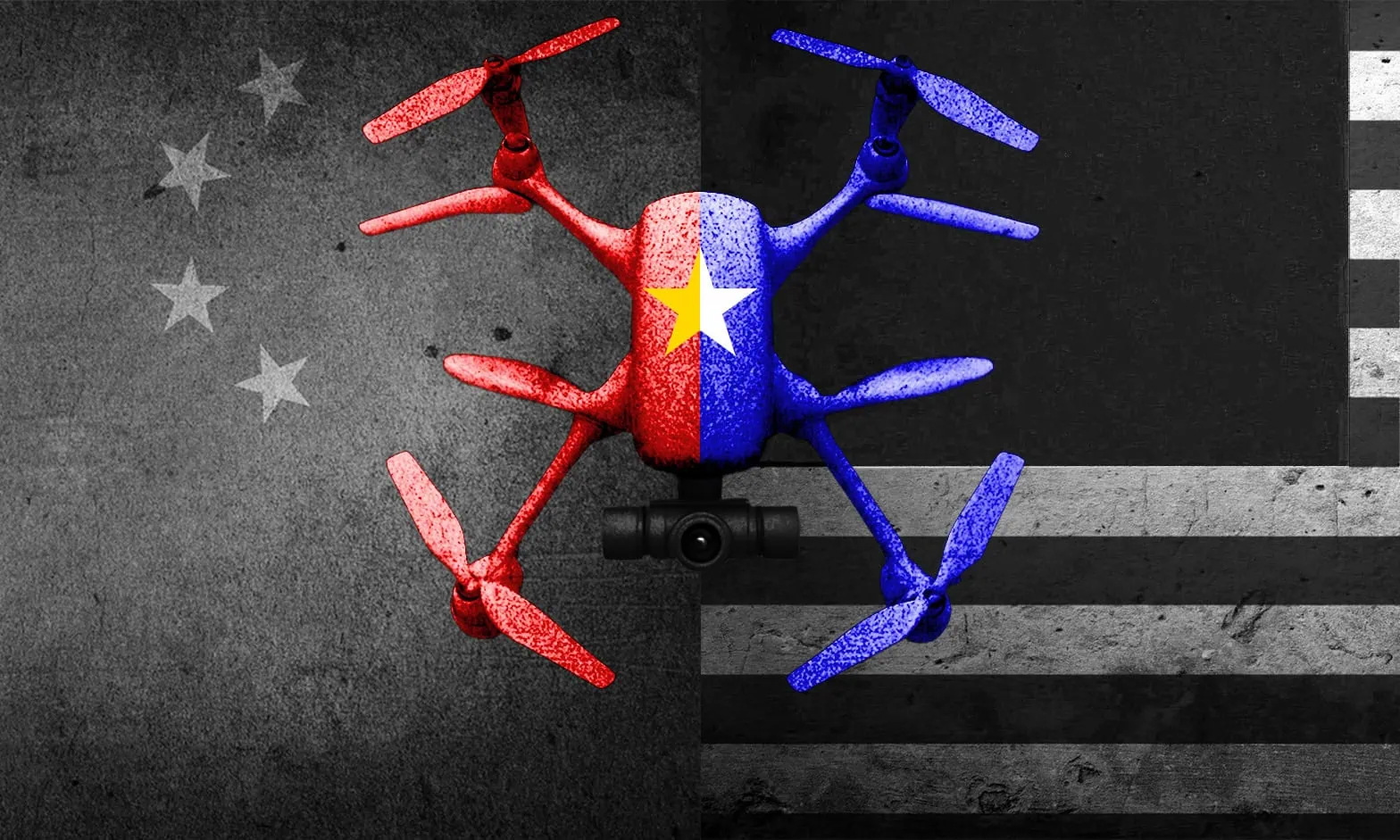
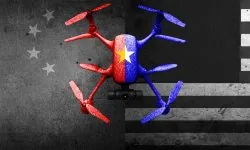
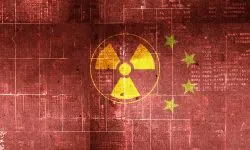







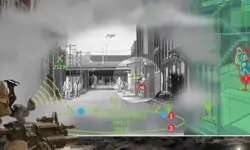

Interesting perspective on a critical emerging technology. In the US Air Force, as early as over 40 years ago we were using RPV dune buggies to develop the technology and tactics that would become precision strike and used to counter mobile missile launchers and other threats. By the 90s, we were testing RPV and semiautonomous Jetskis to determine unmanned performance and capabilities that could be exploited in the surface environment for stealth, communications, and other missions, as the Ukrainians have demonstrated so recently. In fact, the cruise missiles were basically a new combination of existing technologies… radionavigation systems including GPS and gyroscopes dating back to WWII, nap of the earth flight and radar terrain following like the F-111, jet and rocket technologies, and a selection of missile launch options from ground, air, and sea. As has been proven before, the integration of AI with these warfighting technologies will enable and require changes in the way war is fought, the balance of power, and the geopolitical arena… so, the question, like that of the cold war, is will it become so hot that it devastates the human population resulting in another global societal collapse as Jared Diamond discusses, or will our ability to socially evolve and cooperate result in the emergence of a new ultrasociety and global order to avoid another global societal collapse and implement a new international rules based order? Does Peter Zeihan’s demographics based analysis of US/China rivalry and withdrawal from global leadership play out? As Turchin says, “Since we can foresee the effect of ChatGPT and its ilk on potentially creating large numbers of counter-elites, in principle, we can figure out how to manage it. The problem is that I have no confidence that our current polarized, gridlocked political system is capable of adopting the policy measures needed to defuse the tensions brought about by elite overproduction and popular immiseration. I hope I am wrong; but if not, prepare for a rough ride.” (https://peterturchin.com/when-a-i-comes-for-the-elites/ Nov 2023 blog post) Semper Paratus! Gene